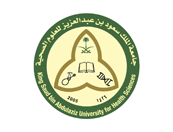Abstract
Purpose: Academic stress is a well-known component of life as a healthcare professional student, with the COVID-19 pandemic ushering in additional challenges. This study investigated trends in perceived stress, in relation to demographic and lifestyle choice variables among pharmacy students, during the initial months of the COVID-19 pandemic, at a U.S. school of pharmacy. Methods: A cross-sectional, descriptive study was conducted at Samford University’s McWhorter School of Pharmacy utilizing a web-based questionnaire that was distributed to all enrolled second-, third-, and fourth-year Doctor of Pharmacy students. The survey instrument contained 22 items and was arranged into three sections to characterize demographic information, lifestyle choices, and perceived stress – using the validated 10-item Perceived Stress Scale (PSS-10). Results were analyzed using SPSS. Results: A total of 332 students were invited to participate in the study. One-hundred fifty-seven responses were received (47.2% response rate). The median (IQR) Perceived Stress Scale (PSS-10) score of students was 22 (4.0), suggestive of a moderate level of perceived stress. There were no respondents with a PSS-10 score of 0-13, which would indicate low perceived stress. Thirteen (8.2%) students reported a PSS-10 score of ≥27, which is suggestive of a high level of perceived stress. Most students reported positive lifestyle choices (e.g., 75.2% reported sleeping 6-8 hours per night and 60.5% exercised 6-8 hours per week). In the analysis of mean rank PSS-10 score by demographic and lifestyle variables, a statistically significant difference was noted only by gender (p= .009), with the female gender reporting a higher mean rank PSS-10 score. Discussion: Despite engagement in positive lifestyle choices (i.e., routine exercise, adequate sleep, and social engagement), trends in perceived stress did not differ significantly from those respondents who reported more unhealthy behaviors (i.e., no exercise, insufficient hours of sleep, and social isolation). Timely study of factors that can positively influence student wellbeing are warranted.
Recommended Citation
Deas, Crystal and Manis, Melanie
(2023)
"Evaluation of Perceived Stress and Lifestyle Choices at the Beginning of the COVID-19 Pandemic Among Students at A School of Pharmacy in the United States,"
Health Professions Education: Vol. 9:
Iss.
1, Article 6.
DOI: 10.55890/2452-3011.1031
Available at:
https://hpe.researchcommons.org/journal/vol9/iss1/6



